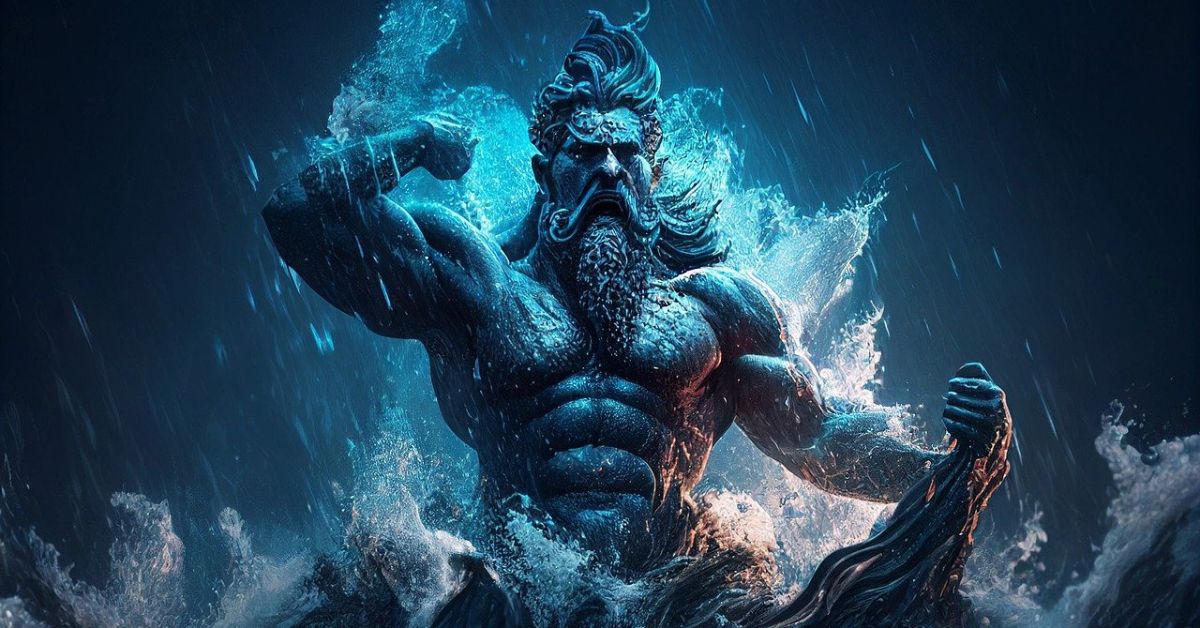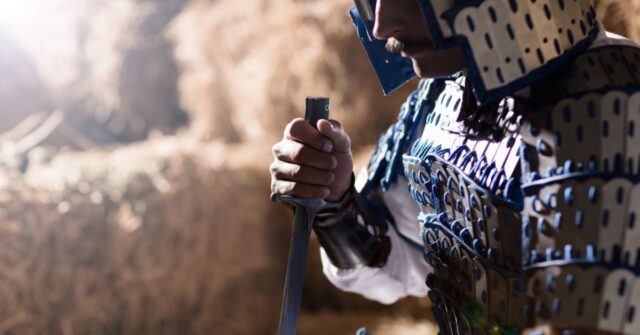This comprehensive study explores the rich mythologies of the Norse and Greek civilizations.
We will delve into their pantheons, creation myths, and values, offering a detailed comparison of these ancient belief systems.
By examining both the similarities and differences, we aim to provide a deeper understanding of how these mythologies reflect their respective cultures.
Introduction
Mythologies serve as windows into the soul of ancient cultures, revealing their fears, values, and worldviews.
The Norse and Greek mythologies, with their vivid tales of gods, heroes, and cosmic events, offer a fascinating glimpse into the past.
This study will compare these two rich traditions, highlighting their unique characteristics and shared themes.
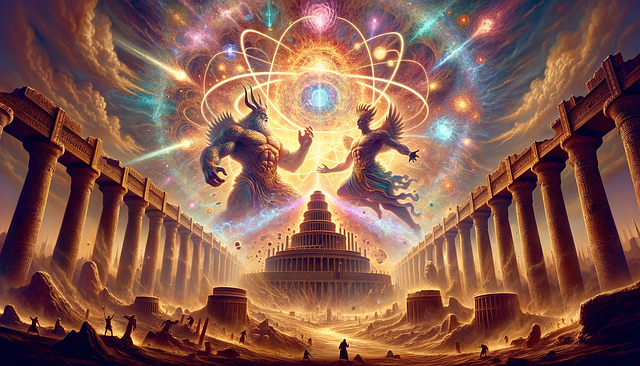

Overview of Norse and Greek Mythologies
Mythologies of ancient civilizations reveal much about their cultures, values, and worldviews. Among the most captivating are the mythologies of the Norse and the Greeks.
Norse mythology, with its tales of valor and the inevitable Ragnarok, reflects the harsh realities and warrior ethos of the Viking Age.
Greek mythology, rich with gods who mirror human flaws and virtues, offers a window into the complexities of ancient Greek society.
Both mythologies, though distinct, provide timeless stories that continue to captivate modern audiences.
Purpose and Scope of the Comparative Study
This comparative study aims to explore the similarities and differences between Norse and Greek mythologies.
By examining the pantheons, creation myths, interactions with humans, and underlying themes and values, we will gain a deeper understanding of these ancient belief systems.
This analysis will also highlight how each mythology reflects the unique culture and worldview of its people.
Overview of the Pantheons
The pantheons of Norse and Greek mythology are populated by a diverse array of gods and goddesses, each with their own distinct roles and attributes.
Understanding these deities provides insight into the cultures that worshipped them and the values they embodied.
The Greek Pantheon
The Greek pantheon is dominated by the Olympian gods, a group of twelve deities who reside on Mount Olympus.
Zeus, the king of the gods, rules over them, alongside his siblings Hera, Poseidon, Demeter, Hestia, and his offspring Athena, Apollo, Artemis, Ares, Hephaestus, Hermes, and Dionysus.
Each god has a specific domain, such as Poseidon’s rule over the sea and Athena’s association with wisdom and warfare.
Major Greek Gods and Their Domains
Zeus, the chief deity, governs the sky and thunder, while Hera, his wife, presides over marriage and childbirth.
Poseidon controls the seas, and Hades rules the underworld. Athena is the goddess of wisdom and war, Apollo oversees music, prophecy, and healing, and Artemis is the goddess of the hunt and moon.
Ares embodies war, Hephaestus is the god of fire and craftsmanship, Hermes is the messenger god, and Aphrodite governs love and beauty.
Demeter is associated with agriculture and Dionysus with wine and revelry.
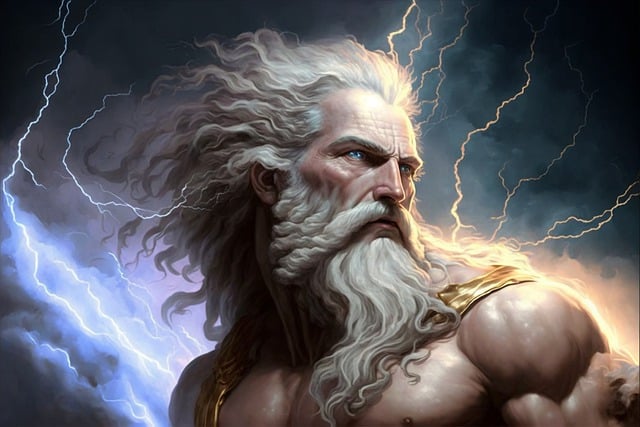

Olympian Gods vs. Titans
Before the Olympians, the Titans ruled. These primordial deities, children of Uranus (Sky) and Gaia (Earth), were overthrown by Zeus and his siblings in a cataclysmic battle known as the Titanomachy.
This victory marked the beginning of the Olympian reign and established the divine order that would dominate Greek mythology.
The Norse Pantheon
The Norse pantheon is divided into two main groups: the Aesir and the Vanir.
The Aesir, led by Odin, is associated with war and governance. While the Vanir, linked to fertility and prosperity, includes deities like Freyr and Freyja.
The two groups initially clashed but eventually reconciled, exchanging hostages and forming a unified pantheon.
Major Norse Gods and Their Realms
Odin, the All-Father, is the chief god, presiding over wisdom, war, and death. Thor, his son, is the god of thunder and the protector of humanity. Loki, the trickster, brings both chaos and aid to the gods.
Freyr and Freyja, originally Vanir, are associated with fertility and love. Other significant gods include Tyr, the god of war and justice, and Baldr, the god of light and purity.
Aesir vs. Vanir: The Two Clans of Norse Gods
The Aesir and Vanir, though initially adversaries represent different aspects of the Norse world. The Aesir are warriors and rulers, reflecting the harsh, combative nature of Viking life.
The Vanir, with their connection to fertility and prosperity, embody the agricultural and natural aspects of Norse culture.
Their eventual unification symbolizes the merging of these essential elements into a cohesive belief system.
Creation Myths and Cosmology
Creation myths explain the origins of the world and the gods, providing a foundation for the belief systems of both Norse and Greek cultures.
These stories reflect the values and understandings of the universe held by these ancient peoples.
Greek Creation Myth
The Greek creation myth begins with Chaos, a primordial void. From Chaos emerged Gaia (Earth), Tartarus (the Underworld), and Eros (Love).
Gaia birthed Uranus (Sky), and together they produced the Titans, the Cyclopes, and the Hecatoncheires (giants with a hundred hands).
Cronus, a Titan, overthrew Uranus and became the ruler, only to be overthrown by his own son, Zeus, who established the reign of the Olympian gods.
The Role of Chaos, Titans, and Olympians
Chaos represents the formless state of the universe before creation. The Titans, as the first gods, embody the raw, untamed forces of nature.
Their defeat by the Olympians signifies the establishment of order and civilization. This myth reflects the Greek belief in the triumph of reason and structure over chaos.
Norse Creation Myth
The Norse creation story begins with the primordial void, Ginnungagap, flanked by the fiery realm of Muspelheim and the icy world of Niflheim.
When the heat of Muspelheim met the ice of Niflheim, it created the giant Ymir and the cow Audhumla. Ymir’s body was used by Odin and his brothers, Vili and Ve, to create the world.
His flesh became the earth, his blood the seas, his bones the mountains, and his skull the sky.


The Battle Between the Gods and Ymir
Ymir’s death marks the beginning of the world as known in Norse mythology. The creation of the cosmos from Ymir’s body parts signifies the gods’ power to shape and control their environment.
This myth underscores the Norse emphasis on the cyclical nature of life and death, as well as the transformative power of creation and destruction.
Mortality and Fate
The concepts of mortality and fate are central to both Norse and Greek mythologies.
While Greek gods are immortal and subject to the decrees of the Fates, Norse gods are mortal and face an inevitable destiny foretold by the Norns.
These beliefs reflect each culture’s views on life, death, and destiny.
Greek Gods and Immortality
Greek gods are immortal and eternal, existing beyond the constraints of time and death. This immortality allows them to intervene in human affairs and maintain their divine order.
However, their actions are often influenced by the Moirai, or Fates, who control the destiny of both gods and mortals.
The gods, despite their power, cannot alter the decrees of the Fates, highlighting the inescapable nature of destiny.
The Role of the Fates (Moirai)
The Moirai, or Fates, are three sisters who spin, measure, and cut the thread of life. Clotho spins the thread, Lachesis measures it, and Atropos cuts it, determining the lifespan and destiny of every individual.
Their role in Greek mythology underscores the belief in an immutable fate that even the gods must respect.
Norse Gods and Mortality
Norse gods, unlike their Greek counterparts, are not immortal. They can age, be wounded, and even die.
This mortality is a central theme in Norse mythology, reflecting the harsh and unpredictable nature of the Viking world.
The gods’ awareness of their eventual doom at Ragnarok adds a poignant depth to their stories, emphasizing courage and honor in the face of inevitable destruction.
The Concept of Fate and the Norns
The Norns, similar to the Greek Fates, are three sisters who weave the destiny of gods and humans. Urd, Verdandi, and Skuld represent the past, present, and future.
Their influence extends over all beings, and their decrees are unchangeable.
This concept of fate highlights the Norse belief in the predetermined nature of life and the importance of accepting one’s destiny with bravery and dignity.
Interactions with Humans
Interactions between gods and humans are a common theme in both mythologies, though they manifest differently.
Greek gods frequently meddle in human affairs, often producing demigods, while Norse gods have more limited and purposeful interactions with humanity.
Greek Gods and Human Interactions
Greek mythology is replete with stories of gods interacting with humans, often resulting in the birth of demigods.
Zeus, in particular, is known for his numerous affairs with mortal women, producing heroes like Heracles and Perseus.
These interactions reflect the gods’ capricious nature and their direct influence on human affairs.
Notable Myths and Demigods
Heracles, son of Zeus and the mortal Alcmene is renowned for his incredible strength and twelve labors. Perseus, another son of Zeus, is famous for slaying Medusa and rescuing Andromeda.
These demigods, with their extraordinary abilities, bridge the gap between mortals and the divine, embodying the Greek ideal of heroism and glory.
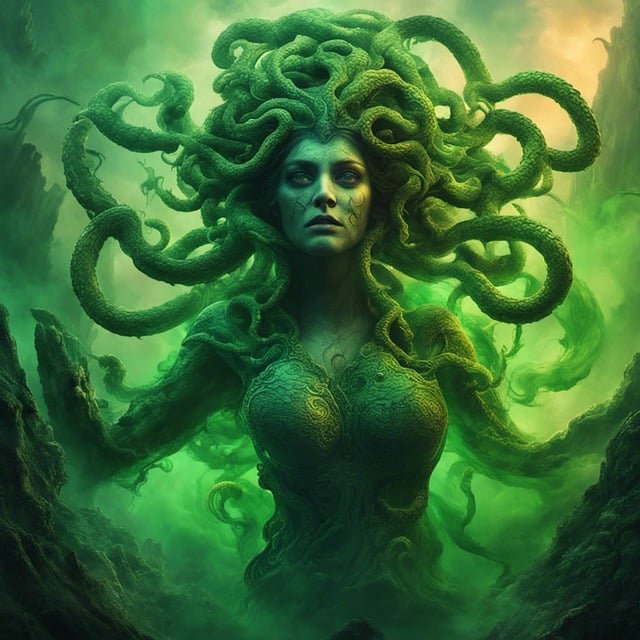

Impacts on Greek Society and Culture
The interactions between gods and humans in Greek mythology reinforced the belief in divine intervention and the importance of appeasing the gods through rituals and offerings.
Heroes like Heracles and Perseus became cultural icons, representing the values of strength, bravery, and honor.
Their stories were celebrated in art, literature, and religious practices, shaping Greek cultural identity.
Norse Gods and Human Interactions
Norse gods interact with humans less frequently than their Greek counterparts. Instead, they often engage with giants, reflecting the Viking focus on strength and combat.
When they do interact with humans, it is usually to offer guidance or aid, as seen in the stories of Thor and Odin.
These interactions are less about romantic entanglements and more about imparting wisdom or assistance in battle.
Relationships with Giants and Humans
In Norse mythology, the gods often have complicated relationships with giants (Jotunns). For example, Thor frequently battles giants to protect Asgard, the realm of the gods.
However, there are also instances of cooperation and intermarriage between gods and giants, such as the union between Odin and the giantess Skadi.
These interactions highlight the complex and often adversarial relationship between different beings in Norse mythology.
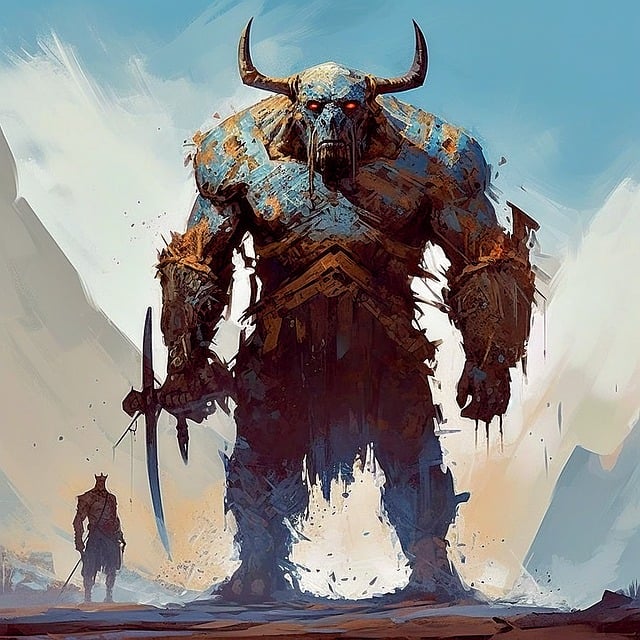

Impacts on Norse Society and Culture
Norse myths and their depiction of the gods’ interactions with humans and giants emphasize the values of bravery, loyalty, and honor.
These stories were integral to the Viking warrior culture, providing models of behavior and reinforcing societal norms.
The tales of gods like Thor and Odin, who faced great challenges with courage and wisdom, served as inspiration for the Norse people in their own lives and battles.
Themes and Values
The themes and values of each mythology reflect the culture that created it.
Greek mythology often focuses on heroism and the dangers of hubris, while Norse mythology emphasizes courage, loyalty, and the acceptance of fate.
These themes reveal the underlying principles that guided each civilization.
Greek Mythology Themes
Greek mythology often revolves around themes of heroism, hubris, and the pursuit of glory.
The gods, though powerful, exhibit human flaws and emotions, making them relatable and their stories cautionary.
Hubris, or excessive pride, frequently leads to the downfall of both mortals and gods, teaching lessons about the dangers of overreaching and the importance of humility.
Heroism, Hubris, and Glory
Stories like those of Achilles and Odysseus highlight the Greek ideal of the hero who seeks glory on the battlefield or through epic quests.
However, these tales also serve as warnings about the consequences of hubris. Achilles’ wrath leads to personal tragedy, while Odysseus’ pride prolongs his journey home.
These myths underscore the balance between ambition and humility.
Role of Honor and Retribution
Honor and retribution are central to Greek mythology. The gods often punish those who defy them or exhibit hubris, as seen in the stories of Prometheus and Arachne.
These narratives reinforce the importance of respecting the divine and adhering to societal values.
They also illustrate the Greek belief in the inevitability of retribution for wrongdoing, whether by humans or gods.
Norse Mythology Themes
Norse mythology emphasizes themes of courage, loyalty, and the acceptance of fate.
The gods are depicted as brave warriors who face their destinies with honor, even knowing that their end will come at Ragnarok.
This acceptance of mortality and the focus on personal valor reflects the harsh realities of the Viking world and the importance of facing life’s challenges with fortitude.
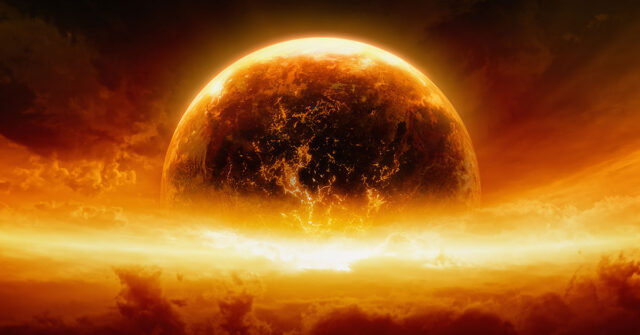

Courage, Loyalty, and the Warrior Ethos
Norse myths celebrate the virtues of courage and loyalty, particularly in the context of battle.
Heroes like Sigurd and gods like Thor embody these qualities, demonstrating the importance of bravery in the face of danger and loyalty to one’s kin and comrades.
The warrior ethos is a central theme, with valor and honor prized above all else.
Acceptance of Death and Ragnarok
Ragnarok, the prophesied end of the world, is a key theme in Norse mythology.
The gods’ acceptance of their fates, despite their knowledge of the impending doom, highlights the Norse belief in the inevitability of death and the importance of facing it with dignity.
This acceptance is seen in tales where gods and heroes prepare for their final battles, knowing they cannot change their destiny.
Afterlife Beliefs
Beliefs about the afterlife provide insight into how ancient cultures viewed death and what they considered important in life.
Greek mythology features a structured Underworld, while Norse mythology describes multiple realms where souls may reside based on their actions in life.
Greek Afterlife
In Greek mythology, the afterlife is primarily associated with the Underworld, ruled by Hades.
Souls of the dead journey to the Underworld, where they are judged and assigned to different realms based on their deeds in life.
The virtuous may enter the Elysian Fields, a place of eternal happiness, while the wicked are condemned to Tartarus, a realm of punishment.
The Underworld and Hades
Hades, the god of the Underworld, oversees the realm where souls reside after death.
The Underworld itself is divided into different regions, including the Elysian Fields for heroes and the virtuous, and Tartarus for the damned.
This division reflects the Greek belief in justice and the afterlife as a continuation of one’s earthly actions.
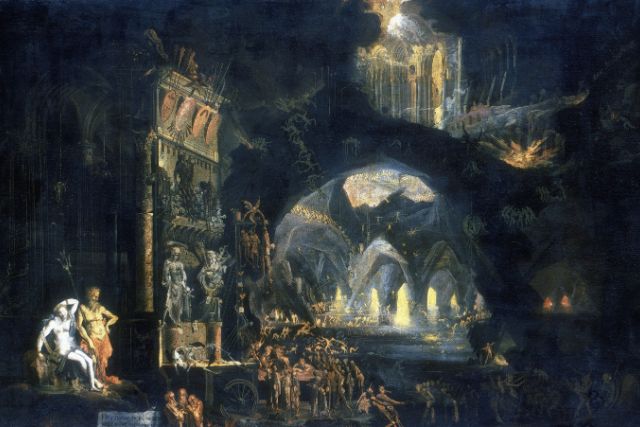

Norse Afterlife
Norse beliefs about the afterlife are more varied, with several different realms where souls may go.
Valhalla, ruled by Odin, is where slain warriors, chosen by the Valkyries, spend their afterlife preparing for Ragnarok.
Hel, governed by the goddess Hel, is a more somber place where those who did not die in battle reside. Other realms include Folkvangr, where the goddess Freyja receives half of those who die in combat.
Valhalla, Hel, and Other Realms
Valhalla is a grand hall where Odin welcomes fallen warriors, who spend their days fighting and their nights feasting, preparing for the final battle at Ragnarok.
Hel, on the other hand, is a realm for those who die of sickness or old age, a place of rest and sometimes sorrow.
Folkvangr, Freyja’s realm, is another destination for warriors, sharing those slain in battle with Odin.
These diverse afterlife beliefs reflect the Norse emphasis on valor in life and the varied fates awaiting them in death.
Comparative Analysis
By comparing the mythologies of the Norse and Greek civilizations, we can better understand their unique and shared aspects.
This analysis highlights the differences in their gods, human interactions, and underlying values, as well as the similarities that reveal universal human concerns and themes.
Similarities Between Greek and Norse Mythologies
Despite their cultural differences, Greek and Norse mythologies share several similarities. Both are polytheistic, with a pantheon of gods who oversee various aspects of life and nature.
Each mythology includes creation myths, explains the cosmos, and emphasizes the role of fate.
Additionally, both traditions have rich stories of heroes and divine beings that highlight universal human experiences and values.


Polytheism and Divine Hierarchies
Both Greek and Norse mythologies are polytheistic, featuring numerous gods and goddesses with specific domains and responsibilities.
The Greek pantheon is led by Zeus, while the Norse pantheon is led by Odin.
This hierarchical structure reflects the societal organization and religious practices of the ancient Greeks and Norse, emphasizing the importance of divine order and authority.
Creation Myths and Cosmology
Each mythology includes a detailed creation story that explains the origins of the world and the gods.
- In Greek mythology, the cosmos is born from Chaos and shaped by the Titans and Olympians.
- In Norse mythology, the world is created from the body of the giant Ymir, and the gods establish order from the primordial chaos.
These myths reflect the human desire to understand the universe’s beginnings and the forces that shape it.
Concepts of Fate and Prophecy
Both mythologies emphasize the role of fate in the lives of gods and humans.
In Greek mythology, the Moirai (Fates) control the destiny of all beings, while in Norse mythology, the Norns weave the threads of fate.
These concepts highlight the belief in predetermined destiny and the acceptance of one’s path in life, regardless of the gods’ power or influence.
Differences Between Greek and Norse Mythologies
Despite their similarities, Greek and Norse mythologies also have significant differences. These include the nature and mortality of the gods, their interactions with humans, and the values they emphasize.
These differences reflect the distinct cultures and worldviews of the ancient Greeks and Norse.
Nature and Mortality of the Gods
Greek gods are immortal and often portrayed as perfect beings, superior to humans in every way. In contrast, Norse gods are more human-like, with flaws, emotions, and the ability to die.
This distinction highlights the Greek ideal of divine perfection and the Norse emphasis on the inevitability of death and the importance of facing it with courage.
Interaction with Humans
Greek gods frequently interact with humans, often engaging in romantic entanglements or directly influencing their lives.
Norse gods, however, have fewer interactions with humans and are more focused on their battles with giants and other supernatural beings.
This difference reflects the Greek view of gods as active participants in human affairs and the Norse focus on strength and combat.
Values and Societal Impact
Greek mythology often emphasizes heroism, glory, and the consequences of hubris, reflecting the values of ancient Greek society.
In contrast, Norse mythology highlights courage, loyalty, and the acceptance of fate, mirroring the harsh realities of Viking life.
These values are embodied in the myths and stories of each culture, shaping their societal norms and practices.
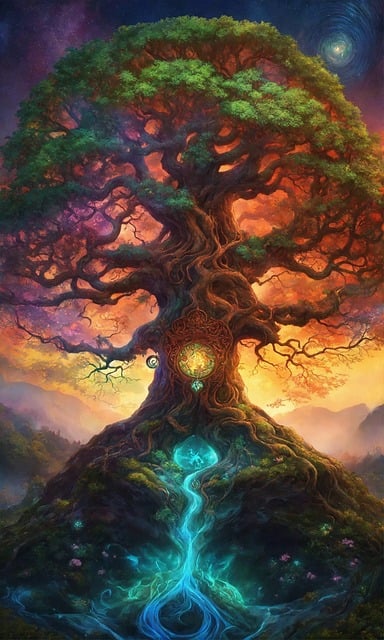

Notable Myths and Stories
Myths and stories from both traditions offer rich narratives filled with lessons and cultural insights.
Greek mythology is famous for tales like those of Perseus and Heracles, while Norse mythology features the adventures of Thor and the tragic tale of Ragnarok.
Greek Mythological Tales
Greek mythology is rich with tales of gods, heroes, and epic quests. These stories not only entertain but also convey important cultural values and lessons.
Among the most famous are the myths of Perseus, Helen of Troy, and Heracles, each illustrating different aspects of Greek mythology.
The Birth of Perseus
Perseus, the son of Zeus and Danaë, is one of the most celebrated heroes in Greek mythology. His story begins with his miraculous birth, as Zeus visits Danaë in the form of golden rain.
Perseus’s adventures include slaying the Gorgon Medusa, whose gaze could turn people to stone, and rescuing Andromeda from a sea monster.
His tale highlights themes of bravery, divine intervention, and the triumph of good over evil.
The Trojan War and Helen of Troy
Helen of Troy, renowned for her beauty, was the cause of the legendary Trojan War. Her abduction by Paris, a prince of Troy, led to a decade-long conflict between the Greeks and the Trojans.
This epic war, detailed in Homer’s “Iliad,” showcases themes of heroism, the wrath of gods, and the devastating effects of hubris and betrayal.
Key figures include Achilles, Hector, and Odysseus, whose actions and fates are intertwined with the whims of the gods.
The Twelve Labors of Heracles
Heracles, known for his incredible strength, is tasked with completing twelve labors as penance for killing his family in a fit of madness caused by Hera.
These labors include slaying the Nemean Lion, capturing the Golden Hind of Artemis, and obtaining the girdle of Hippolyta.
Heracles’ story emphasizes themes of redemption, perseverance, and the complex relationship between gods and mortals.
Norse Mythological Tales
Norse mythology, like its Greek counterpart, is filled with tales of gods, giants, and heroic deeds.
Central to these stories are the adventures of Thor, the tragic death of Baldr, and the prophesied end of the world, Ragnarok.
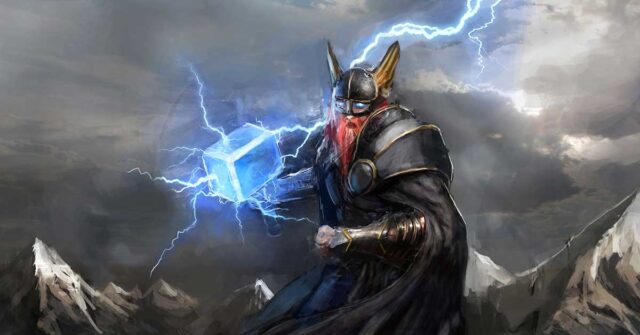

The Adventures of Thor
Thor, the god of thunder, is one of the most prominent figures in Norse mythology.
Known for his strength and bravery, Thor embarks on numerous adventures to protect Asgard from giants and other threats.
One notable tale is his journey to Jotunheim, where he tries to lift the giant Utgarda-Loki’s cat and wrestles an old woman, only to discover he was deceived by illusions.
These stories highlight Thor’s might, determination, and occasional gullibility.
The Death of Baldr
Baldr, the god of light and purity, is beloved by all the gods.
His death, caused by a mistletoe dart wielded by his blind brother Hodr under Loki’s manipulation, is one of the most poignant tales in Norse mythology.
Baldr’s demise sets off a series of events leading to Ragnarok. This story emphasizes themes of loss, betrayal, and the inexorable approach of fate.
Ragnarok: The End of the World
Ragnarok is the prophesied apocalypse in Norse mythology, where the gods face their ultimate battle against the giants and other creatures of chaos.
Despite knowing their fate, the gods prepare for this final conflict with courage and honor.
Key events include the death of Odin at the hands of Fenrir, the battle between Thor and the Midgard Serpent, and the rebirth of the world from its ashes.
Ragnarok embodies themes of doom, renewal, and the cyclical nature of existence.
Conclusion
The mythologies of the Norse and Greek cultures provide timeless stories that continue to resonate today.
By comparing these traditions, we gain a deeper appreciation for their unique qualities and shared human experiences. These myths remain relevant, offering lessons and inspiration across generations.
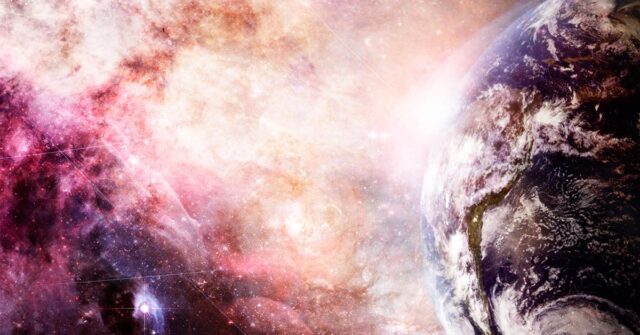

Summary of Key Findings
Through this comparative study, we have explored the rich and complex mythologies of the Norse and Greek civilizations.
Both traditions share similarities in their polytheistic structures, creation myths, and emphasis on fate.
However, they also exhibit significant differences in the nature of their gods, interactions with humans, and underlying cultural values.
Greek mythology often focuses on the themes of heroism and hubris, while Norse mythology highlights courage, loyalty, and the acceptance of destiny.
The Enduring Legacy of Greek and Norse Mythologies
The myths of the Norse and Greek civilizations continue to captivate and inspire people around the world.
Their stories are not just relics of the past but living narratives that influence modern literature, art, and popular culture.
The enduring appeal of these mythologies lies in their exploration of universal human experiences, their vivid characters, and their profound reflections on life, death, and the divine.
Further Reading and Resources
For those interested in delving deeper into Norse and Greek mythologies, numerous resources are available.
Classic texts such as Homer’s “Iliad” and “Odyssey,” Hesiod’s “Theogony,” and the Poetic Edda and Prose Edda of Norse mythology provide comprehensive insights.
Modern retellings and analyses, such as Neil Gaiman’s “Norse Mythology” and Edith Hamilton’s “Mythology,” offer accessible introductions to these rich traditions.
Online resources, including Norse Mythologist, Scandinavian Facts, and Mythosaurus, provide additional information and interpretations.

